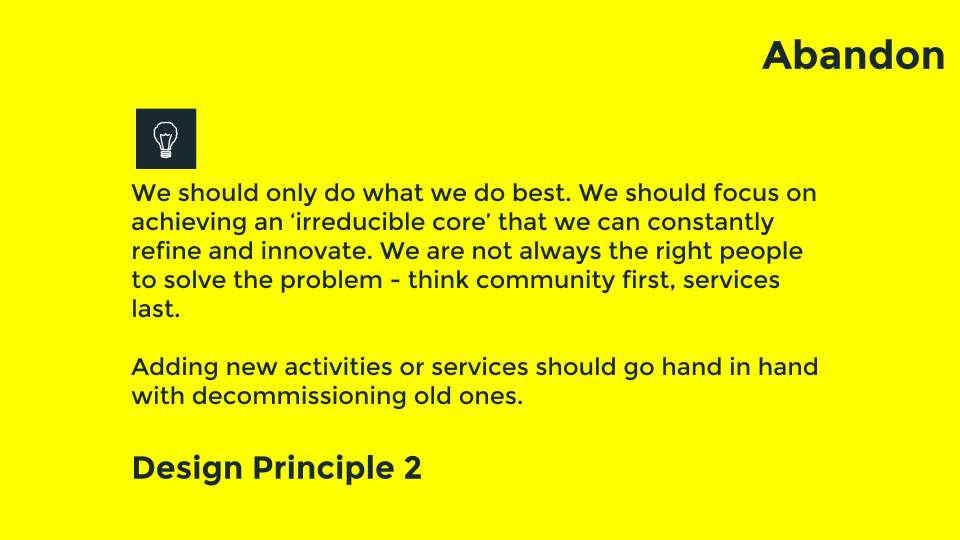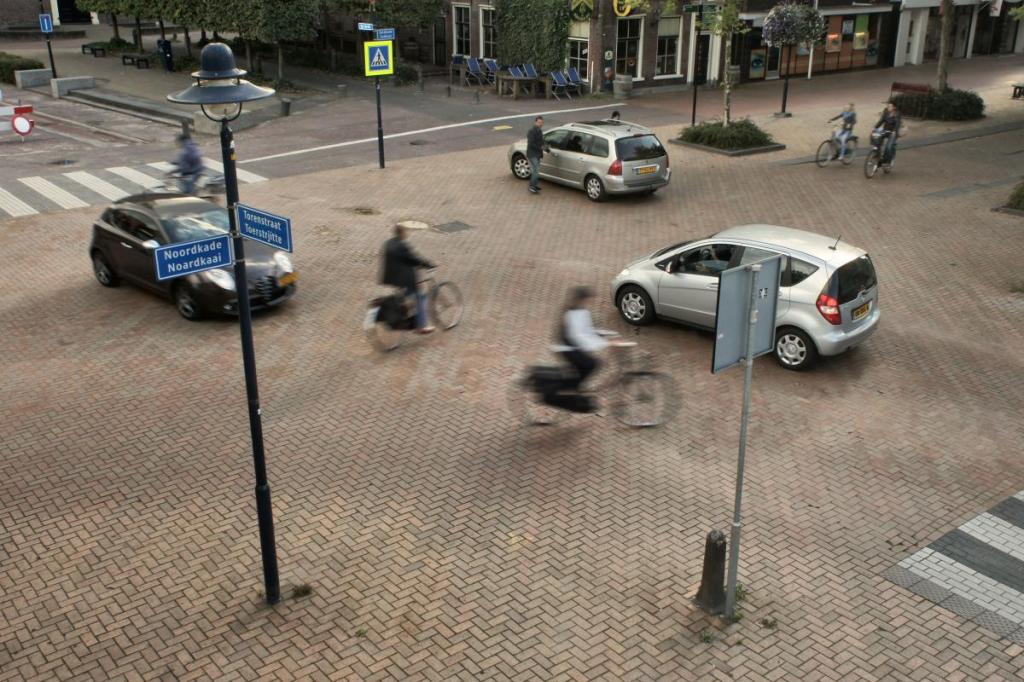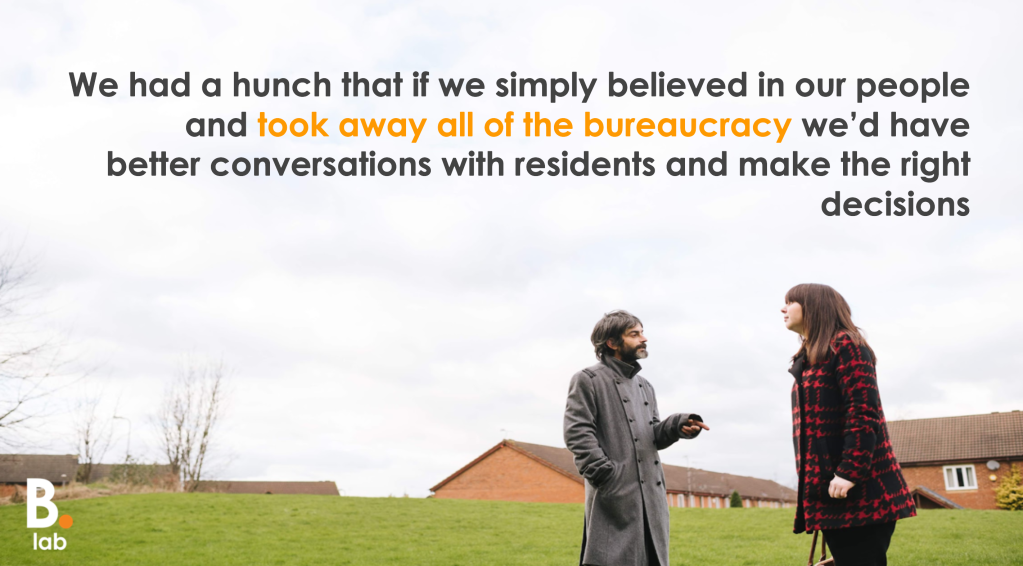“Most geniuses—especially those who lead others—prosper not by deconstructing intricate complexities but by exploiting unrecognized simplicities.” ~ Andy Benoit
When companies want to change they almost always add something to the mix. A new team, a new senior leader, a new process, a new system.
We’re obsessed with adding new elements as a way of attempting to solve problems.
That’s why, at Bromford, we created a design principle that mandated that as we add something new we should also decommission something old.

I would be lying to you if I said it was wholly successful. It seems that when we want to change something, we are predispositioned to add things rather than subtract.
The authors of an article for HBR go some way to confirming this. They found that even when stakeholders suggested hundreds of ways to improve an organization, fewer than 10% of those improvements involved taking something away. Across a series of experiments, they found ‘that people systematically overlook subtractive changes, instead following their instincts to add’. They go on to say that ‘there is nothing inherently wrong with adding. But if it becomes a business’s default path to improvement, that business may be failing to consider a whole class of other opportunities’.
So, to improve a piece of writing, few participants in experiments produced an edit with fewer words. To improve a jam-packed travel itinerary, few removed events to allow them to enjoy the trip more. To improve a Lego structure, almost no one took pieces away.
Humans solve problems by adding complexity, even when it’s against our best interests.
In Subtract: The Untapped Science of Less, Leidy Klotz describes why we do this. Often it is just signalling that we’ve done something, our innate desire to add our impression and build upon what has gone before. As he says “The problem is that it can be harder to show competence by subtracting….No matter how beneficial an act of subtraction is, it’s not likely to leave as much evidence of what we’ve done.”
Seemingly, subtraction is not the way to climb the corporate hierarchy.
WHEN LESS = MORE
Subtractive design is the process of removing imperfections and extraneous parts in order to strengthen the core elements.
Many of you will know that during the 1980s and 1990s, the Dutch engineer Hans Monderman conducted a series of radical experiments on how road traffic could be managed. He stripped them of signs and other traffic controls in the belief that if drivers and pedestrians are confused, they are likely to behave more cautiously. And the evidence suggests that he was correct.

At the time, most of his colleagues believed in adding more traffic controls on the grounds that the better informed drivers and pedestrians were about the condition of the roads and how to use them, the safer they would be.
Monderman’s theory was that increasing traffic regulations reduces personal responsibility.
As he said “The trouble with traffic engineers is that when there’s a problem with a road, they always try to add something. To my mind, it’s much better to remove things.”
What looks like chaos can sometimes produce cooperation.
When we first designed the role of the Neighbourhood Coach that was principle we attempted to follow. What if we stripped away the policies and the procedures, the rules and regulations, the back office support colleagues and stripped a role back so it could perform its purpose unfettered of bureaucracy and interference?

A couple of weeks ago I got to go out with one of our coaches , Amy, in a neighbourhood I’d worked in about 15 years ago. It was what we once called a “Bronze Estate” , one of those places that was beset by a range of social problems and the resultant indicators of high rent arrears and anti-social behaviour.
What was clear to me is that Amy was succeeding where we had failed. Rather than adding things (specialist teams, additional budgets, new policies, more ‘professionals’) she was fostering community connections, bringing people together to solve problems and empowering individuals to do things for themselves rather than being done to.
She was strengthening the core elements rather than adding in new and temporary resources.
We often find it easier to face a complex problem than a simple one. However, by taking time to seek out those unrecognised simplicities and resisting the temptation to add more stuff we may solve those problems in an easier and much more sustainable way.

